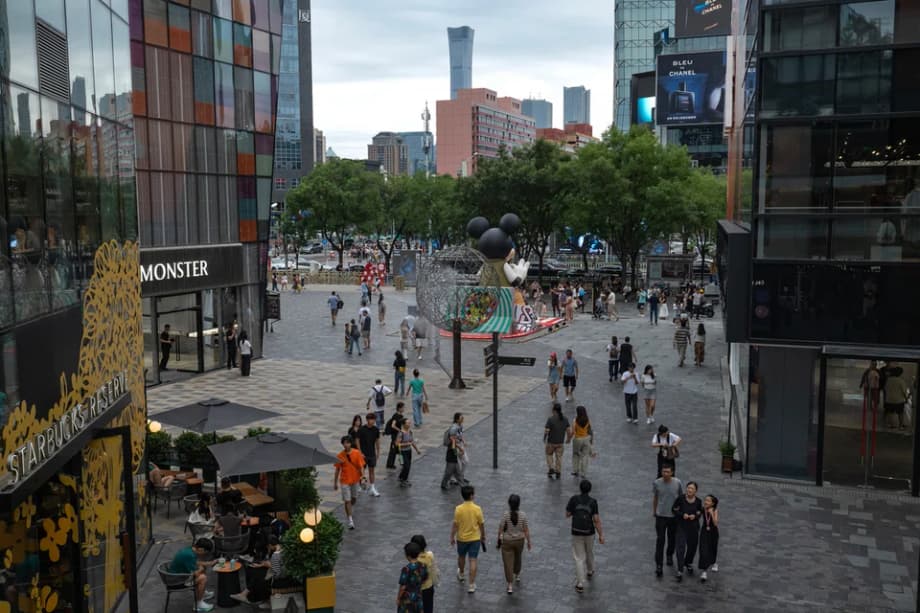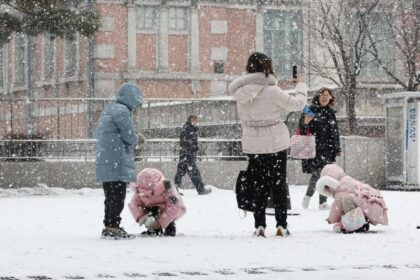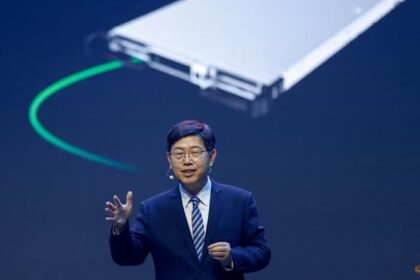A new spending force in a cooling economy
China’s economy is growing at a slower pace, and policymakers want consumers to spend more at home to offset weak property and export sectors. One clear bright spot is female spending. Across cities large and small, women are investing in personal care, travel, entertainment and daily comforts. The market often called the she economy is now estimated to exceed 10 trillion yuan each year, a scale that puts women at the center of many categories from beauty and wellness to fashion, fitness, digital content and travel.
- A new spending force in a cooling economy
- Who is driving the she economy
- What women are buying now
- Experiences over obligations
- Digital playbook, creators and community
- Marriage, motherhood and shifting values
- The price conscious pivot and secondhand momentum
- What this means for brands and the economy
- What to Know
This surge is not just about buying more things. It is about agency, identity and community. Women who are single or marrying later are channeling income into experiences and products that improve life now, whether that means premium skincare, a solo trip, a group fitness challenge or a night out with friends. Even as many households remain cautious, female consumers are driving fresh demand in services and lifestyle segments that reward quality, convenience and emotional lift.
The trend sits alongside a push from authorities to encourage marriage and childbearing to address a falling birthrate. Yet many women, shaped by a competitive education system and intense workplaces, are choosing to invest in themselves first. A snapshot of the moment can be found at a touring all male dance troupe that sells out shows across China, and at clinics that offer noninvasive cosmetic treatments with short recovery times. In both cases, women are voting with their wallets for experiences that feel personal, empowering and fun.
Who is driving the she economy
The core of this spending wave is women in their 20s, 30s and early 40s who grew up under the one child policy. Many are university educated, live in urban areas and hold stable jobs. The wage gap with men has narrowed in some sectors, and digital skills are now a daily asset. This generation is also comfortable making independent purchase decisions. They often manage household budgets and direct spending for parents or children when that applies.
Attitudes toward marriage and motherhood are changing. With living costs rising and work expectations high, a growing share prefer to delay or skip milestones that older generations treated as essential. That does not mean a rejection of family life. It means the timeline and priorities are shifting. The guiding idea is straightforward. A good life includes self care and growth, not only obligations. That outlook translates into steady demand for beauty, wellness, fitness, travel and entertainment that deliver tangible gains in confidence and happiness.
What women are buying now
Women are reshaping demand across categories. The strongest growth is in products and services that promise visible results or meaningful experiences. Beauty and health continue to lead the way, followed by travel, fitness and small indulgences that provide quick joy. Brands that deliver quality and respect women’s time are breaking through, especially when they create a sense of community around the purchase.
Beauty, health and premium picks
Medical aesthetics has moved into the mainstream, especially among younger consumers who favor noninvasive treatments with limited downtime. Industry forecasts put the market value at more than 400 billion yuan by 2025, covering services from skin rejuvenation to laser hair removal. Alongside clinic visits, high end skincare is a staple in many routines. Consumers study ingredients, compare reviews and pay for formulas that show results rather than status alone.
Health is broadening beyond physical checkups. Women are buying functional foods, collagen and plant based supplements for better sleep, skin and digestion. Demand for mental health support is growing too. Workplace counseling and online emotional management services have seen rising interest, as conversations about burnout and stress become more open. Fitness has moved from trend to habit. Yoga, Pilates, running clubs and strength training attract women across age groups, while smart wearables turn daily activity into data and goals. Even senior consumers are joining classes and using mobile health apps as platforms improve accessibility.
Emotional consumption and small treats
Many young shoppers are trimming big ticket purchases yet still setting aside money for feel good moments. Economists sometimes call this emotional consumption, and it has lifted categories such as drinks, toys, films and games for a decade. Beverage chains that offer tasty, affordable tea and coffee thrive because they deliver quick comfort at a low price point. Pop culture collectibles, including blind box toys, add the fun of surprise and social sharing to everyday purchases.
For some, these treats are a way to recharge without breaking the budget. Kitty Lu, a 23 year old Chinese student in Melbourne, described the logic behind these choices.
“I spend to make myself happy. It sounds a bit reckless, but I do have a number in my mind.”
Young consumers often say they are frugal on daily necessities, then willing to spend on hobbies, a special meal or a short getaway. That mix of restraint and reward is reshaping demand across categories, and it favors brands that pair value with a spark of delight.
Experiences over obligations
Travel has become a prime outlet for self investment. Women are booking wellness retreats, culture rich itineraries and short breaks that fit busy schedules. Solo female travel is more common, while women only tours and interest based groups add safety and community. Experiences that blend exercise with exploration, such as hiking weekends or city running tours, appeal to a generation that wants fitness and discovery in the same trip.
Entertainment is also evolving. A touring troupe known in Chinese as Male Dog Theatre has performed roughly 340 shows in just over 100 cities this year, fueled by fan engagement like photo sessions and signings. Attendees cheer when dancers shed jackets and reveal sculpted physiques. Those under 16 are not allowed at the shows. The group’s founder, Ge Junyi, frames the appeal as a space where women can relax and have fun. Introducing his approach, he said the goal is enjoyment without judgment.
“We try to create a stage where the audience can unleash their true selves and enjoy,” said Ge Junyi, founder of the group.
Elsewhere, services tailored to women are multiplying. Guided hikes led by male escorts and amusement parks staffed with handsome attendants point to a market that prioritizes attention and play. Supporters see these formats as a sign of rising status and choice. Critics argue they commodify men. The broader story is that women now have the power to decide what feels worth their time and money, and they are using it.
Digital playbook, creators and community
Female consumers are the heartbeat of China’s digital culture. About 624 million women are active internet users, close to half of the online population. They spend more time online per month than the average user, with short video, lifestyle services, entertainment and social apps taking a large share of attention. This digital fluency shapes how products are discovered, evaluated and purchased.
Social commerce communities such as Xiaohongshu, WeChat ecosystems and creative platforms are central to this process. Women post reviews, share routines, compare before and after results and ask questions. Key opinion leaders build trust by speaking from lived experience. For brands, the lesson is clear. Authentic storytelling from a woman’s perspective beats stereotypes. Campaigns that respect individuality, celebrate diverse bodies and show real life trade offs tend to resonate. International and domestic labels alike have succeeded when they let women lead the narrative rather than framing products as quick fixes.
Retail calendars now revolve around female focused events. The 3.8 Festival tied to International Women’s Day has grown into a major ecommerce moment. Strong performers craft messages about achievement and choice, collaborate with creators, and design limited editions that feel personal. Beyond discounts, the winning formula pairs good value with meaning. That can look like a fitness app offering small group sessions for women, a skincare brand hosting skin coaching or a travel company bundling safety tools with solo itineraries. The common thread is service built around women’s real needs.
Marriage, motherhood and shifting values
China’s leadership has promoted marriage and childbearing to slow a decline in births. Many women, however, weigh the cost of housing, childcare and career breaks against their current goals. A large share choose to postpone family formation or to stay single. They see their earnings as a way to reduce stress and enjoy life, especially after long hours and fierce competition at work.
A Shanghai office worker captured this mindset in plain language.
“Income is money to be spent to pamper ourselves,” she said, describing a reward for the exhaustion of hard work and pressure in society.
This perspective does not exclude family. It reorders priorities. Women who do start families want supportive workplaces and reliable services. That also creates demand for products that save time and energy, from ready to cook meals to family health apps and flexible childcare. The she economy has room for both the single traveler planning a weekend escape and the young mother ordering supplements and scheduling a gym class during lunch.
The price conscious pivot and secondhand momentum
Even as they spend, many women are searching for value. Daily shopping has become a balance of trading up for what matters and trading down where it does not. Luxury bags might give way to quality mid range pieces, while splurges focus on a special meal with friends or a trip. Secondhand luxury is booming, with large warehouses and online platforms making authenticated designer goods more accessible. This is a practical way to look polished without paying full retail.
Female users are also powering the circular economy. Idle goods trading apps have added millions of women in the past year, as buyers and as sellers. The appeal goes beyond savings. Resale is social and sustainable, and it lets consumers refresh their style more often. The same thinking shows up in automotive and tech. Women are telling carmakers they want intuitive digital cabins and safe driver assist features. In the home, smart appliances that fit real routines are the draw, not gadgets for their own sake.
What this means for brands and the economy
The she economy is a durable source of demand at a time when China needs more consumption. Official data show retail sales increased 4.6 percent in the first eight months of 2025 compared with a year earlier, a sign that household spending is still growing despite weak property activity. Authorities expect broader recovery as retirees, Gen Z shoppers and female wage earners gain confidence. Female consumers sit at the center of this outlook. Their purchases lift services, manufacturing and local travel, and their reviews steer countless others.
Brands that win do a few things well. They design products around real use cases, not pink packaging. They create safe, welcoming spaces online and in stores, where questions are encouraged and privacy respected. They collaborate with trusted creators who speak plainly, avoid tokenism and show diverse experiences. They link to meaningful moments in the calendar, from Women’s Day to marathon seasons and graduation. They support communities with classes, checkups and meetups that make products part of life.
There is also a role for better financial and health services. Single women in cities want savings tools, insurance and investment products that fit their goals. Many want access to mental health care without stigma, and they will pay for good counseling. Travel firms that take safety seriously with real time support and clear policies build loyalty fast. Carmakers and smart home makers who remove friction win repeat customers.
Chinese leaders have signaled their intent to grow consumption. Speaking at a global forum in Tianjin, Premier Li Qiang framed the target in plain terms.
“China seeks to become a mega sized consumption powerhouse,” he said.
Female consumers are already part of that story, and their choices are changing how companies build and sell. The she economy sits alongside the silver economy and a push for greener living as the next engines of demand. For now, one constant stands out. When brands listen and deliver value with respect, women respond.
What to Know
- Female spending in China forms a market estimated at more than 10 trillion yuan a year.
- Core drivers are educated, urban women in their 20s to 40s who prioritize self care, travel and experiences.
- Medical aesthetics is on track to exceed 400 billion yuan by 2025, while premium skincare and supplements keep growing.
- Emotional consumption is rising, with small indulgences like tea drinks, toys, films and games delivering quick joy.
- Travel demand includes more solo and women only trips, plus fitness themed experiences.
- A touring all male dance troupe has performed roughly 340 shows in just over 100 cities, illustrating appetite for female focused entertainment.
- About 624 million women are active internet users, and social commerce communities heavily influence purchases.
- Successful campaigns use authentic storytelling from women’s perspectives and avoid stereotypes.
- Secondhand luxury and idle goods resale are growing as women seek value and sustainability.
- Official figures show retail sales rose 4.6 percent in the first eight months of 2025, with female consumers a key support.
- Brands that design around real needs, partner with trusted creators and build community are gaining share.
- Government encourages marriage and births, yet many women are choosing to invest in themselves first.












